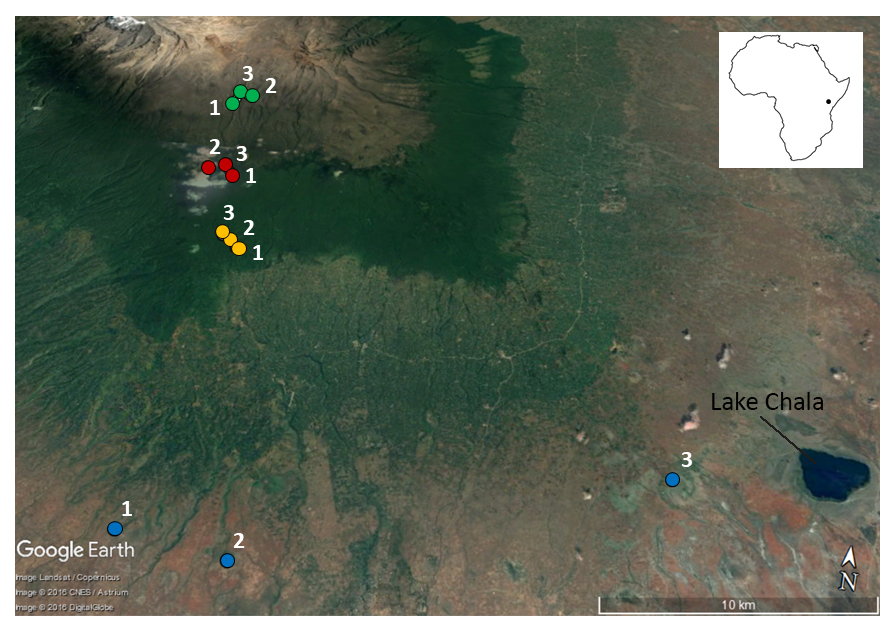Environmental controls of leaf-wax n-alkane hydrogen-isotopic signatures along an elevation transect at Mount Kilimanjaro
Objectives
Leaf-wax n-alkanes are produced by terrestrial plants, and through long-term preservation in sediments their stable hydrogen-isotopic signature (δ2Hwax) provides useful information on past hydrological variation for paleoclimate reconstructions. However, gaps remain in our understanding of the relationships between the isotopic signatures of leaf waxes and the plants’ source water. In this study, we report observations from a data-scarce tropical region in equatorial East Africa, with the overarching aim to improve mechanistic understanding required for reliable interpretation of δ2Hwax as paleohydrological proxy. We investigate the distribution patterns of leaf waxes (i.e. average chain length and carbon preference index) and δ2Hwax from diverse species and growth forms of terrestrial plants during four successive wet and dry seasons along an elevation transect which covers distinct ecosystems at Mount Kilimanjaro (see figure below). Variation in δ2Hwax will be analyzed with linear mixed-effect models and compared with the associated δ2H values from a wide range of water sources, including local precipitation as well as plant xylem and leaf water, to determine the hydrogen-isotopic fractionation between the distinct water sources and leaf-wax n-alkanes (Griepentrog et al., 2019).

Project partners
- Prof. Dr. Pascal Boeckx (Isotope Bioscience Laboratory (ISOFYS), Department of Green Chemistry and Technology, Ghent University, Ghent, Belgium)
- Prof. Dr. Dirk Verschuren (Limnology Unit, Department of Biology, Ghent University, Ghent, Belgium)
Contact
Marco Griepentrog ()
References
Griepentrog, M., De Wispelaere, L., Bauters, M., Bodé, S., Hemp, A., Verschuren, D., Boeckx, P., 2019. Influence of plant growth form, habitat and season on leaf-wax n-alkane hydrogen-isotopic signatures in equatorial East Africa. Geochimica et Cosmochimica Acta 263, 122-139. external page Read more